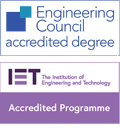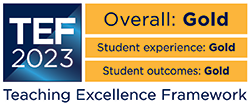Course overview
You develop knowledge and key skills in advanced aerospace structures, advanced fluid dynamics, finite element methods, sustainability, space mission analysis and trajectory design, and supply chain management.
You have access to our flight simulator, wind tunnel, materials and manufacturing labs, structural test labs and scanning electron microscope. You also learn how to use industry-standard software such as the General Mission Analysis Tool (GMAT), NASA’s open-source software, Siemens NX and Ansys Fluent. The General Mission Analysis Tool (GMAT) is the world’s only enterprise, multi-mission, open-source software system for space mission design, optimisation, and navigation. The system supports missions’ in-flight regimes ranging from low Earth orbit to lunar, libration point, and deep space missions.
Course details
Course structure
Core modules
Aircraft structures are characterised by their high strength to weight ratios - this is largely achieved by using monocoque and semi-monocoque thin walled components.
This module starts with a revision of torsion and shear flow and then explores the stress and shear flow distribution in loaded structures of increasing complexity. You examine the effects of loading on symmetrical beams and asymmetrical beams before turning your attention to more realistic aircraft type semi-monocoque structures.
The emphasis is on hand calculation techniques to ensure that you are able to sensibly interpret the results of finite element analyses that you conduct in the future on similar structures.
This module covers multiphase flow and computational fluid dynamics for various engineering applications, and incompressible and compressible flow applicable to flight of subsonic and supersonic aircraft.
In addition it includes a revision of the fundamental fluid flow and thermodynamic governing equations, introduction to CFD, multiphase flow, subsonic and supersonic around wings, flow through nozzles and diffusers, oblique shock waves and expansion waves, shock wave and boundary layer interaction.
The module content will be delivered by lectures, seminars and laboratory sessions. This will include a series of keynote lectures delivered by academic staff providing the core of the learning experience, supplemented by problem-solving seminars and IT-based laboratory sessions providing an opportunity to explore complex flows through the use of CFD codes.
You investigate an area of engineering and work independently to a level recognised to be at the forefront of the discipline. The topic can be in the form of a research project or a design project. Key skills in research and in knowledge application and creation will be developed through keynote lectures and self-managed independent study. You are required to demonstrate the capacity for a comprehensive and objective analysis, and for developing innovative and constructive proposals for the solution to the project topic.
This module provides practical experience of using commercially available finite element packages. The application of the method is demonstrated using a number of case studies. You are encouraged to use the technique as an extension of your standard text books in solving design and manufacturing problems.
Space Mission Analysis and Trajectory Design
This module elaborates the fundamental concepts of space mission analysis, spaceflight orbital mechanics and introduces trajectory design for planet-centred and interplanetary missions.
You start with a short review of the mission selection process. And you are introduced to the design and characterisation of planet-centred orbits and related orbit transfer manoeuvres.
The module investigates the mathematical modelling and analysis of orbital perturbation, Earth-bound and interplanetary trajectory design, gravity assist manoeuvres. You are introduced to concepts of space system theory applied to missions around the Lagrange’s points.
This module demonstrates how to benchmark an organisation and introduces you to the concepts of key performance indicators, total quality management (TQM), six sigma, total productive maintenance (TPM) and supply chain management. You learn the manufacturing assessment methodology based on data provided in a benchmarking case study. Topics covered in TQM, TPM, and supply chain management enable you to plan activities, which improve quality programme maintenance planning and supply chain integration for an organisation and move that organisation towards sustainable competitive advantage.
You will investigate how the role of the engineer is becoming more focused on serving society as well as industry and to recognise the impact of engineers’ decisions on society and the environment.
As engineers of the future, you will need to have a sustainable worldview, acknowledging international, cultural, and diversity issues in society. In addition, you will also be expected to solve complex problems with consideration for multi-perspective views, long-term effects, risk, and the impacts of decisions on society.
This module will examine the key topics surrounding sustainability in the context of engineering applications across a range of disciplines and key future challenges such as energy, transport, and construction.
The subjects will be taught through a combination of lectures and seminars. Lectures will develop key concepts and knowledge. Seminars will allow more focused examinations of important issues and approaches.
Modules offered may vary.
How you learn
You learn through lectures, tutorials and practical sessions. Lectures provide the theoretical underpinning while practical sessions give you the opportunity to put theory into practice, applying your knowledge to specific problems.
Tutorials and seminars provide a context for interactive learning and allow you to explore relevant topics in depth. In addition to the taught sessions, you undertake a substantive MSc research project.
How you are assessed
Assessment varies from module to module. The assessment methodology could include in-course assignments, design exercises, technical reports, presentations or formal examinations. For your MSc project you prepare a dissertation.
Entry requirements
You need a first degree in aerospace engineering or relevant engineering discipline equivalent to at least a UK second class (2.2) honours degree. Relevant engineering disciplines includes aerospace, aeronautical, mechanical, and mechanical systems.
Students with a degree awarded outside the UK must also meet the University's minimum English language requirements.
International applicants who need a student visa to study in the UK should check our web pages on UKVI-compliant English language requirements. The University also provides pre-sessional English language courses if you do not meet the minimum English language requirement.
For general information please see our overview of entry requirements
International applicants can find out what qualifications they need by visiting Your Country
Employability
Career opportunities
Most aerospace engineering graduates seek careers in companies directly or indirectly linked to the aerospace industry. However, the skills and knowledge you acquire are also relevant to other sectors such as the automobile, engineering process, oil and gas, electronics, electrical engineering and renewable energy industries.
Our BEng/MEng graduates from Aerospace Engineering course have secured work/placement opportunities with Airbus, BAE Systems, EDF Energy, Rolls-Royce, GE Aviation, Qinetiq, Cobham, Jacobs Engineering Group, Cummins, Labman, Caterpillar and others.
Information for international applicants
Qualifications
International applicants - find out what qualifications you need by selecting your country below.
Select your country:
Useful information
Visit our international pages for useful information for non-UK students and applicants.


